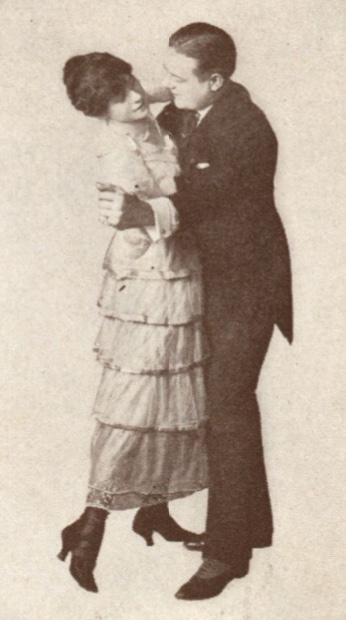I don’t usually write about foxtrot in November, but I don’t usually teach foxtrot in Ukraine in the middle of a war, either, and last month, the dancers of Kyiv’s Vintage Dance Community wanted something for foxtrot that I hadn’t previously described here on Kickery. Here is the description for their future reference and that of others interested in the variations for the foxtrot of the 1910s.
~~~~~~~~~~~~~~~~~~
At least two versions of a zig-zag sequence appeared in short booklets published in 1914 and 1915:
- The Zig-Zag Step and “Trot”: Joan Sawyer’s How to Dance the Fox Trot (Columbia Graphaphone Company, New York,1914)
- The Zig-Zag Run: Description of Modern Dances as Standardized by the New York Society Teachers of Dancing and approved by the Congress of Dancing Societies of America at meeting held December 27th, 1914, in New York City, N. Y. (American National Association Masters of Dancing, Pittsburgh, 1915)
Sawyer characterized the figure as a “hard one” but also “loads of fun”. Her description:
(more…)

